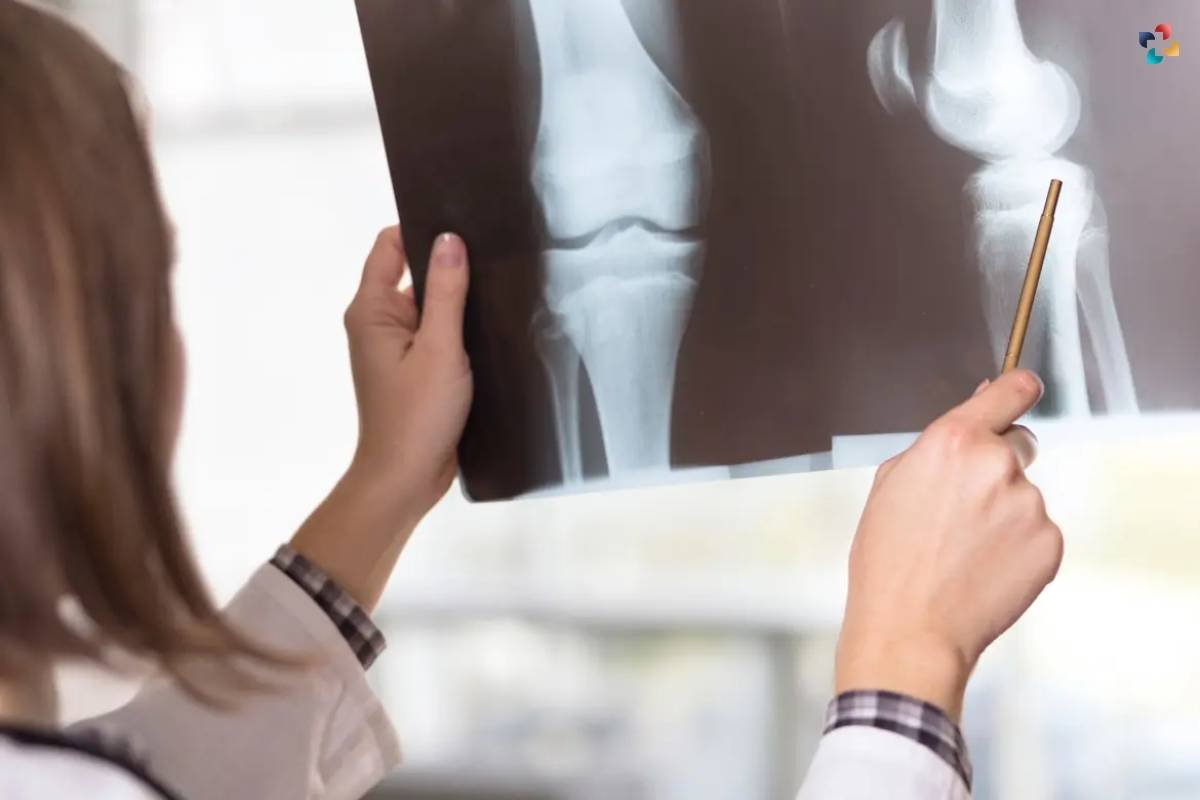As we age, different factors can take a toll on our health. One of them is the importance of maintaining strong and healthy bones. Bones provide our body with the necessary structural framework and also serve as a protective shield for other vital organs of our body. To ensure high quality of life as we get older, it is foremost important to take care of our bone health. While the aging process is completely normal, and we may not have any control over it, there are many strategies that can help us maintain our bone density and reduce the risk of any kind of bone-related diseases.
But before we jump to it, let us first understand what bone density is and how poor bone health can have bad effects on our health.
What is Bone Density?
Bone density refers to the measure of mineral content, primarily calcium and phosphorus, within your bones. It signifies the strength and thickness of your bones, offering insights into their ability to support your body and resist fractures. Maintaining healthy bone density is crucial, especially as you age, to reduce the risk of osteoporosis and fractures. Factors like genetics, diet, physical activity, and hormonal balance influence bone density. Regular assessment through bone density testing can help determine your bone health and identify any need for intervention.
How Poor Bone Density Can Affect Your Health?

Poor bone density can lead to a range of health issues and increased susceptibility to various conditions, making it essential to understand the potential health effects. Here are some of the significant consequences of low bone density:
1. Osteoporosis
Osteoporosis is a condition characterized by weakened bones that are more prone to fractures. Even minor falls or everyday activities can result in fractures, particularly in the hip, spine, and wrist. These fractures can be painful and debilitating, affecting one’s mobility and independence.
2. Increased Fracture Risk
Low bone density significantly elevates the risk of fractures. Fractures can lead to prolonged recovery periods, loss of functionality, and, in some cases, severe complications, such as infections or blood clots.
3. Back Pain and Deformities
Poor bone density can cause the vertebrae in the spine to weaken and collapse, leading to chronic back pain, height loss, and spinal deformities. These issues can have a considerable impact on one’s overall quality of life.
4. Limited Mobility
Fractures and pain associated with low bone density can restrict mobility. This limitation can reduce physical activity and lead to a more sedentary lifestyle, contributing to other health problems like obesity, cardiovascular issues, and muscle weakness.
5. Loss of Independence
The health effects of poor bone density can result in a loss of independence, making it challenging to perform daily activities without assistance.
It’s important to note that bone density issues are not limited to the elderly; they can affect people of all ages. Therefore, understanding the health effects of poor bone density and taking preventive measures through diet, exercise, and medical intervention is crucial for long-term skeletal health.
In this article, we’ll explore five key tips for keeping your bones strong as you age.
Here are 5 Tips to Maintain your Bone Density:
1. Consume a Calcium-Rich Diet

Calcium is a vital mineral for bone health. As you age, your body’s ability to absorb calcium may diminish, making it even more crucial to include an adequate amount of calcium in your diet. Good dietary sources of calcium include dairy products like milk, yogurt, and cheese, as well as leafy green vegetables, almonds, and fortified foods. The recommended daily intake of calcium varies by age and gender, but it generally ranges from 1000-1300 milligrams per day for adults. If you have difficulty meeting your calcium needs through food alone, consider calcium supplements as advised by your healthcare provider.
2. Ensure Sufficient Vitamin D Intake
Vitamin D plays a significant role in calcium absorption and bone health. It aids in the absorption of calcium from the intestines and helps maintain adequate levels of calcium and phosphate in the blood. Spending time in the sun is a natural way to boost your vitamin D levels. However, as we age, our skin’s ability to produce vitamin D decreases, and many older adults spend less time outdoors. Therefore, it’s essential to include vitamin D-rich foods in your diet and, if necessary, consider vitamin D supplements.
3. Engage in Weight-Bearing Exercise
Weight-bearing or weight-loading exercises are activities that require your bones and muscles to work against gravity. These exercises stimulate bone formation and help to maintain bone density. Activities like walking, jogging, dancing, stair climbing, and weightlifting are excellent examples of weight-bearing exercises. Aim for at least 150 minutes of moderate-intensity aerobic activity or 75 minutes of vigorous-intensity aerobic activity each week, along with muscle-strengthening activities on two or more days a week. Always consult with your healthcare provider before starting a new exercise program, especially if you have underlying health conditions.
4. Limit Alcohol and Quit Smoking
Excessive alcohol consumption and smoking have been linked to reduced bone density and an increased risk of fractures. Alcohol can interfere with calcium absorption and disrupt the balance of hormones crucial for maintaining healthy bones. Smoking, on the other hand, reduces blood flow to bones and decreases the absorption of calcium. It’s never too late to quit smoking, and reducing alcohol intake can have a positive impact on your bone health. If you’re struggling to quit smoking or limit alcohol consumption, seek support from healthcare professionals or support groups.
5. Regular Bone Density Testing

Bone density testing is essential for assessing your bone health, especially as you age. Dual-energy X-ray absorptiometry (DXA) is a common method used to measure bone density. The results can help identify your risk of osteoporosis and fractures. Your healthcare provider will recommend how often you should have a bone density test based on your age, risk factors, and overall health. If your test reveals low bone density or osteoporosis, your doctor can suggest appropriate treatments or lifestyle changes help prevent fractures and maintain your bone health.
Conclusion
In conclusion, prioritizing your bone health is an essential factor in increasing the quality of your life after a certain age. Aging is a completely natural process, and we barely have any control over it, changes in bone density make up the natural parts of the aging process. However, if you implement these five strategies, you can hugely reduce your risk of any bone-related health issues as you age.
An important point to remember here is that you are never too late to start caring about your bone health. Whether you are in your 30s or 80s, implementing these strategies will help you make your bones stronger and increase the quality of your life.
Always consult with your healthcare provider before making significant dietary or lifestyle changes, as they can provide personalized recommendations tailored to your individual needs and circumstances.











